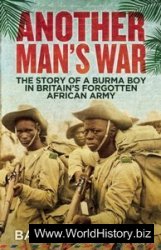Location: 11 miles east of Swindon, and south of Uffington village. (SU 302866)
'Fhis white chalk figure is cut into the turf on the brow of the hill some 500 feet above the Vale of the White Horse, and is 365 feet from head to tail. Below is a steep combe called The Manger, and nearby is a curious flat-topped mound called Dragon Hill. From below the figure is not clearly seen, being too far up on the slope of the hill. The best views of the complete horse are from some miles away across the valley; or from the air. Its origins and meaning are a complete mystery, though it is generally accepted as being very ancient. The first known record of it is found in the twelfth-century records of. Abingdon. Abbey, and refers to the previous century when land was held near ‘White Horse Hill’ by the Abbot. 'Fhere are a number of other references to it in the following two centuries but it seems to have escaped much notice until the eighteenth-century antiquarians took an interest in it and started a controversy which has continued until the present. Some of them attributed the horse to Saxon times, being cut to commemorate victories either by Hengist or. Alfred, but today’s archaeologists have noted that the stylised drawing is not like that of the Saxons’ prancing horse emblem, w'hich faced left, but is very much like the way the Iron. Age Celts of around 100 BC depicted horses and other animals on their artefacts. The Celts were great horsemen and Epona was one of their numerous horse goddesses. The Uffington horse could be a tribute to one of these. But the way in which the neck, back and tail are formed by one continuous sweeping line is also very similar to various Bronze. Age rock carvings, and this could place it at an even earlier date.
Because of its sinuous shape and beaky mouth, some doubt that it was meant as a horse at all. Nearby is Dragon Hill where traditionally St George killed the dragon, the bare patch of chalk on top is where its blood was spilt, and no grass will grow there. Was the horse or dragon cut on the hillside to commemorate this daring deed, or was it the emblem or totem animal of the Iron. Age people who inhabited the nearby earthwork of Uffington Castle, proclaiming their dominion over the valley below? The only really satisfactory view of it is from overhead, so possibly it was intended as a tribute to the gods who would view it from the heavens.
The white chalk hill figures of southern England are constructed by removing the turf and revealing the white chalk subsoil below. The difficult part is getting the outlines correct so that from a distance the figure looks like what it is meant to depict. The eighteenth and nineteenth century landowners who amused themselves by having white horses cut on their hillsides apparently used a technique involving flags pegged out according to instructions shouted through a megaphone, and this sort of trial and error method is the only obvious way. Once cut, the figure would soon become overgrown if not kept clean and fresh chalk pounded on to the surface, and so the ‘scouring’ was organised generally every seventh year. 'Fhe Uffington scouring w'as done over two days by the people of the surrounding villages. The Lord of the Manor provided food and drink; games, contests and sports took place within the embankments of Uffington Castle; and the area was filled with sideshows, drinking booths and all the fun of the fair. Cheeses were rolled down the steep slope of The Manger, to be chased and caught as prizes, a similar event still taking place annually at Birdlip in Gloucestershire. 'I'he regularity of these gatherings lapsed in the second half of the nineteenth century and by the beginning of the twentieth the festivities had ceased.
Such festive gatherings on sacred hilltops with horse and foot races and similar other pastimes occurred at other significant sites in Britain, usually within the earth embankments of a fort, and are doubtless of very ancient origin, as is the cheese-rolling contest. They were just a part of the annual round of rites and customs practised by the ancient people, about which more will be said in Chapter 18.




 World History
World History









